Bloom Time at the Singapore Botanic Gardens
The months of March and April are usually a good time to see many plants flowering in the Singapore Botanic Gardens. Following periods of hot spells and downpours in preceding months, many plants are triggered to bloom.
Here we highlight two striking blooms.
Black Ixora
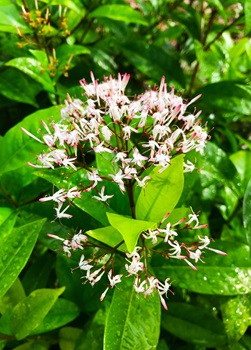
In the Gallop Extension, the most prolific and striking plant blooming is the Ixora nigricans. This medium sized shrub peppers the edges of the path from the Gallop Extension Visitor Counter to the Forest Discovery Centre @ OCBC Arboretum and Botanical Art Gallery.
Belonging to the Coffee family, Rubiaceae, the genus Ixora has over 560 different species and varieties. Ixoras are some of Singapore’s most common flowering shrubs and they come in a variety of colours, shapes and sizes. Hence, it can be difficult to identify this Ixora without close scrutiny. The generic epithet Ixora is derived from the name of the Indian deity Ishwara, whereas the species’ epithet, nigricans, means almost black and alludes to the very dark reddish brown stems of the inflorescences.
Commonly known as the Black Ixora, this fairly large shrub can reach up to 5 m in height. Like most other Ixoras and members of its family, it has a simple opposite leaf arrangement. The leaves are large, between 6 and 10 cm long.
When in full bloom, the shrub has numerous corymbs which hold a multitude of flowers at different stages of opening. The flowers are white and tinged with pink, tubular in shape with four reflexed petals, and highly scented, especially in the evenings. The fruits are pea-sized globose drupes that contain two seeds each.
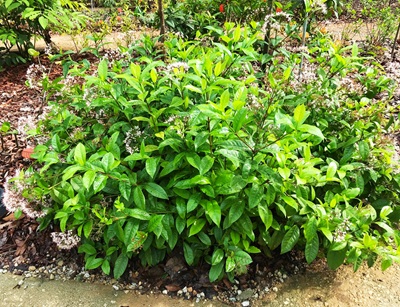
The distribution of the Black Ixora ranges from the Western Ghats of India to Myanmar, where it commonly grows in evergreen to semi-evergreen forests at elevations of up to 800 m. It thrives under full sun or in partial shade and likes fertile, well-draining moist soils that are rich in humus.
In India, this shrub is highly valued by tribal communities for use in traditional medicines. Various parts of the plant are used to treat many ailments, including diarrhoea, dysentery,
stomach disorders and paralysis. In recent years, researchers have been investigating the efficacy of phytochemicals found in this plant for their anti-inflammatory and antioxidative properties.
Not to be outdone, the non-orchid plants also showed off their beauty at every turn, along the paths leading to the Tropical Montane Orchidetum in the National Orchid Gardens.
Ortegon or Red-flowered Sea Grape
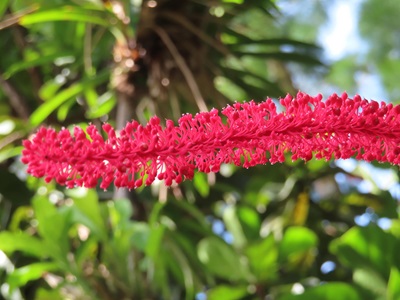
One outstanding and strange looking plant blooming at this time is the Coccoloba rugosa. Belonging to the Knotweed or Buckwheat family, Polygonaceae, the genus Coccoloba is estimated to have 176 species that are native to the Neotropics. Commonly known as the Red-flowered Sea Grape or Ortegon, Coccoloba rugosa is related to the widely grown C. uvifera or Sea Grape that is usually found along coastal beaches in the tropics.
The Ortegon is a small evergreen tree with a skinny trunk, only around 12 cm in diameter, but is able to reach 10 m in height. It only branches from the base, and the green stems are stout and slightly flattened with longitudinal ridges. This tree has huge and beautiful stalkless wrinkled leaves that are alternately arranged, measuring up to 60 cm long with recurved margins.
The fruits are about 1 cm long, reddish and ovoid in shape, and contain a single brown and pointed three-angled seed. Unlike those of the common Sea Grape, the fruits of this species are not known to be eaten.
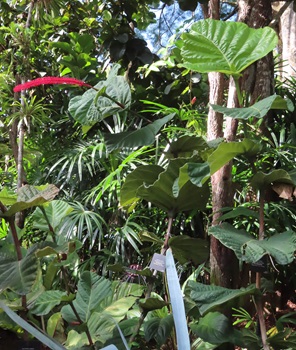
The Ortegon is important within its natural distribution but is becoming endangered due to habitat loss. Its heartwood, which is purplish, fine-grained, hard, heavy and strong, has been used in construction and for cabinet making.
The next time you visit our new attractions, remember to look out for the Black Ixora with its fragrant flowers in the Gallop Extension, and the bizarre-looking Red-flowered Sea Grape amongst the lush greenery and orchids in the Tropical Montane Orchidetum.
Learning More About Our City in Nature
Over the years, NParks has created a green network comprising roadside planting and a Park Connector Network that links up parks and other green spaces. Skyrise greenery dot developments while biophilic design has been adopted in restoring habitats.
But as Singapore continues to urbanise, the growing infrastructure will put increasing pressure on the established green cover. Coupled with climate change and more extreme weather conditions, this will result in higher urban temperatures and the increased risks of localised flooding events. Our City in Nature vision works to ensure the city develops in a way that continues to provide a high-quality living environment for residents while ensuring Singapore remains a distinctive global city.
Learn more about City in Nature here.
Visiting Our Green Spaces
If you are heading to our green spaces, do the right thing and be socially responsible. Keep to not more than five persons in a group. Always wear a mask except when you are engaged in strenuous exercise or when consuming food, drink or medication.
Before heading down to our parks, please visit SafeDistParks.nparks.
Visit NParksSG, our refreshed YouTube Channel that serves as a one-stop repository for close to 300 video resources. It also provides you a platform for existing and future digital outreach including DIY gardening and related crafts, virtual tours of our green spaces, and livestream events.
For more information about the flora and fauna found in Singapore, please visit NParks Flora and Fauna Web.
If you like what you read, follow us on Facebook, Instagram and Telegram to get the latest updates.
This is a slightly edited version of an article that originally appeared in the August 2021 Vol. 57 of Gardenwise.
Text and photos by Dr Nura Abdul Karim
About the writer and photographer
Dr Nura Abdul Karim holds a variety of responsibilities at the Singapore Botanic Gardens. For the Library, she is spearheading initiatives to improve and modernise the library facilities by adopting an integrated library management system. She is also creating greater awareness of the rich Gardens’ library and archive collections by collaborating with the National Library Board (Singapore) and the Biodiversity Heritage Library (USA).
Another of her responsibilities is to develop and manage the collaborative agreements between the Gardens and international botanical institutions. She is also actively involved in training staff and volunteers to be docents of the Gardens.



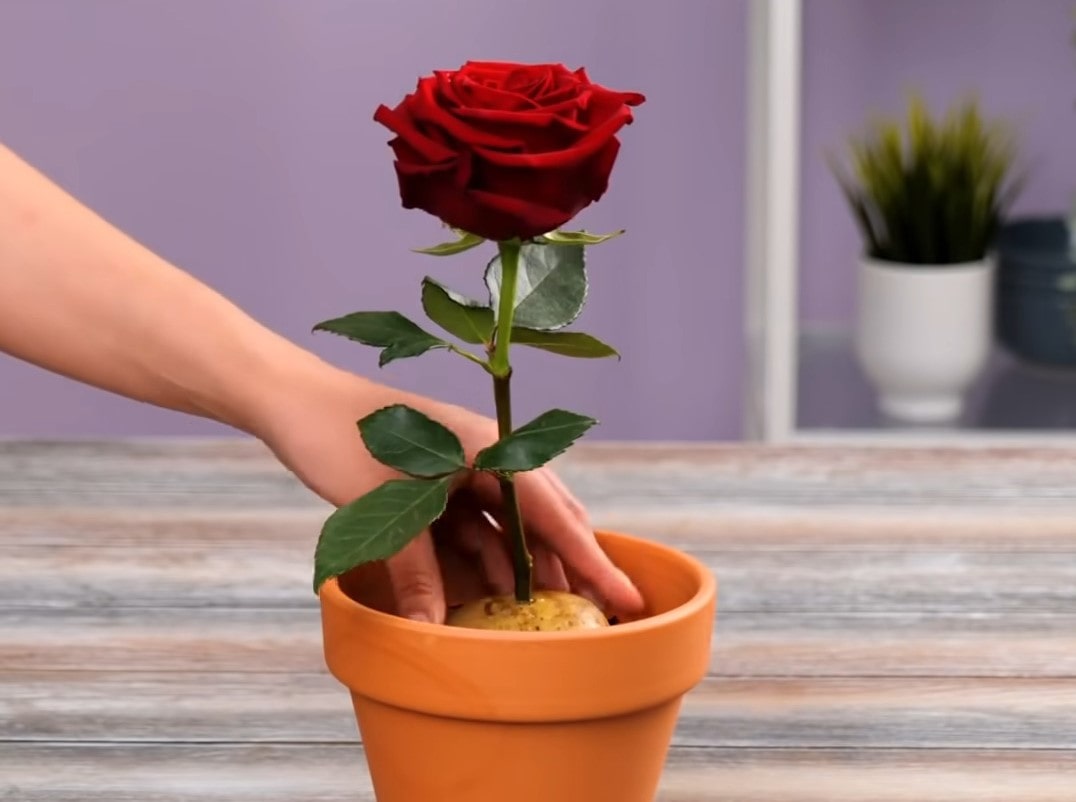

Have views or comments on this article? Let us know via this form. If you would like to give us feedback on any other areas relating to our parks and gardens, please submit via https://www.nparks.gov.sg/feedback